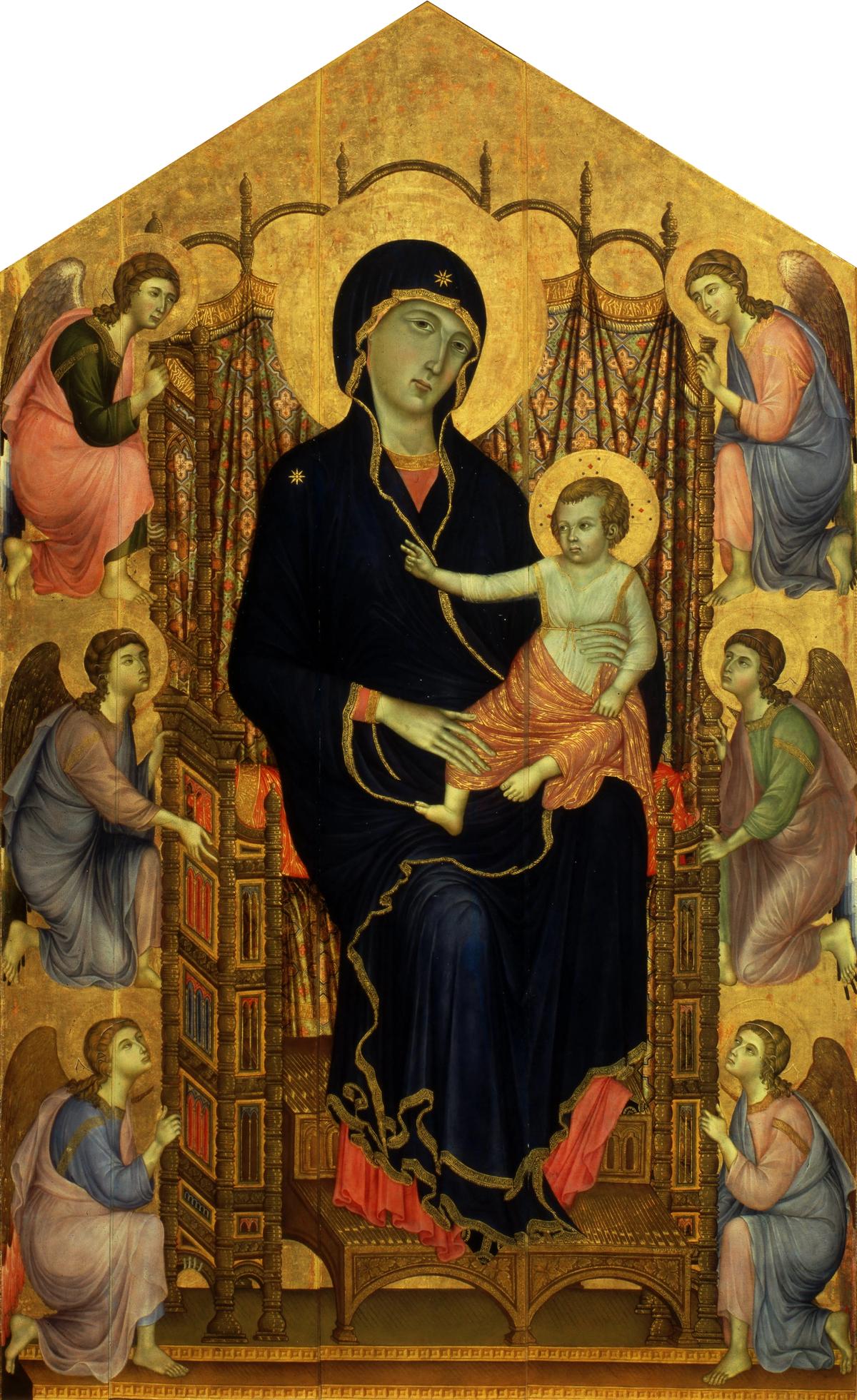Eike Schmidt, the director of the Uffizi gallery in Florence, told the press on 27 May that he thought many religious works of art currently in Italy’s museums and stores should be returned to the churches from which they came. He went on to suggest that one of the most famous early medieval works in his gallery, the Rucellai Madonna by Duccio, painted around 1275, should go back to its original home, the Florentine church of Santa Maria Novella, from which it was removed in 1948.
This idea is part of the Uffizi’s reaction to the coronavirus (Covid-19) crisis, in which it is thinking about diversification and the distribution of its works of art in order to create a “wider” [diffuso] museum beyond the immediate premises of the gallery.
Schmidt conceded that there are advantages to showing art in a museum. For example, at present, the Rucellai Madonna is hung together with altarpieces by the two other super-stars of early medieval Italian painting, Cimabue and Giotto, so that they can be compared with one another, but, he said, the Rucellai Madonna’s absence from Santa Maria Novella takes away an essential part of its history and meaning.
“Devotional art was not born as a work of art but for a religious purpose, usually in a religious setting”, he told The Art Newspaper. He went on to say that, returned to the building for which it was created, it would be seen in the right historical and artistic space and the viewer would potentially be led to recognise its spiritual origins. “If we did not believe that context was important”, he said, the Italian state would not have the legal concept of the art or architectural fixture [vincolo pertinenziale], or practice contextual archaeology instead of an Indiana Jones-type scrabble for mere masterpieces”.
Schmidt is the president of the Fondo edifici di culto (FEC), the religious buildings fund. This is a branch of the ministry of the interior and it owns and maintains nearly 900 of Italy’s Catholic churches and religious buildings. He has discovered that there are around a thousand religious works of art in the stores of Italy’s Soprintendenze (the state bodies with responsibility for art, architecture and archaeology), brought to museums for safe-keeping mainly after the Second World War. There is no proper catalogue and they are not easily available, even to scholars, so the current situation is highly undesirable.
Because most of the churches involved belong to the FEC, the legalities of giving back the art would be simple, as it would simply pass from one state body to another. Conservation and security issues would obviously need to be worked out, but modern technology makes both much easier than in the past; as Schmidt pointed out, Giorgione’s Castelfranco altarpiece, one of the most important paintings of the Italian Renaissance, hangs with very good protection in the church to which it belongs.
Reaction to Eike Schmidt’s proposal has been mixed. Leaving aside the insulting comments of heritage fanatics, of which there are a number in the Italian media, the head of Florence’s diocesan museum, Monsignor Timothy Verdon, told the news agency Ansa that he thought it “a very positive provocation”, but unrealistic “for reasons that everyone will understand”, while the archbishop of Florence, Cardinal Giuseppe Betori said, “the proposal deserves to be noted and commended” but “every case would have to be considered on its own merits”.
Speaking to The Art Newspaper, Mark Jones, former director of the Victoria & Albert Museum in London, agreed that it would have to be on a case-by-case basis, but thought the proposal was going in the right direction. “Anyone who is interested in art knows that it is better in its own context. Ground rules should be set as to what conditions a church would need to fulfil in order to get its art back, and then it should be returned with ceremony to mark its homecoming.”


